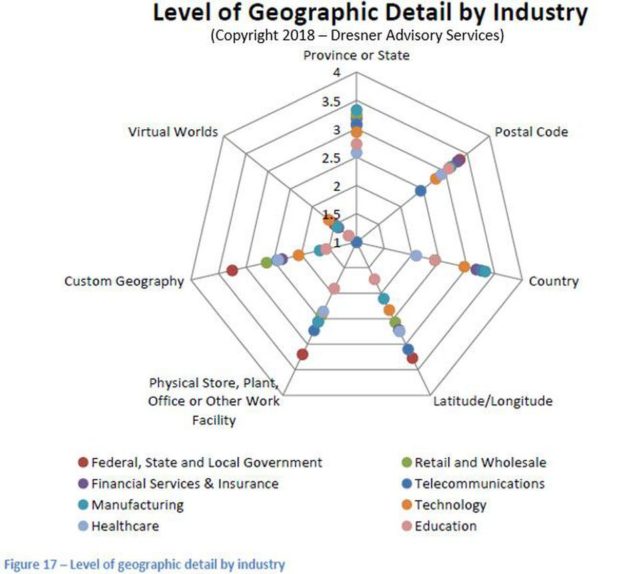For the world at large 1961 was a big year. Yuri Gagarin became the first human to travel into space, the US established the Peace Corps and Disney released its first live-action musical film, “Babes in Toyland.” Yet among these accomplishments, one event should stand out to marketers in particular: the introduction of the term “marketing science.”
Marketing science is the use of data, analytics and scientific processes to fuel marketing decisions, combining quantitative metrics with a qualitative, human-powered approach to marketing. The term was first established in 1961 through the founding of the Marketing Science Institute, a nonprofit that funds academic research in the field.
Since that time, marketing science has evolved to incorporate new technologies and practical uses, such as pulling data from social speech to understand consumer interests and using browser history to map out a clear customer journey. With these insights at their fingertips, marketers can more accurately target consumers and build more personalized messaging at scale.
Still, the question remains: How will marketing science continue to grow, especially now that technologies are advancing at a rapid rate and data is more accessible than ever before?
Here are three marketing science innovations that are expected to change the game for marketers going forward.
Location Intelligence
Location intelligence, gathered from geocodes in mobile and desktop devices, can help brands better understand consumers’ interests and behaviors based on their current and past locations. They can then use these insights to more precisely target users as they research products and make their purchasing decisions. For example, if a restaurant brand sees that a consumer leaves home during dinner time, the brand can target them with an ad for their establishment.
Take location data provider Skyhook Wireless. The company used location intelligence to gather unique insights into the behaviors of Patriots and Falcons fans during Super Bowl LI. They found clear distinctions in dining, shopping, and even gasoline preferences for each fan group. For instance, Falcons fans ate at Arby’s and fueled up at BP and Shell. Meanwhile, Patriots fans got their grub at Chipotle and Dunkin’ Donuts and pumped gas at ExxonMobil. With these insights, brands can build fan-targeted ad campaigns and increase engagement.
Location intelligence is growing. Spending on this strategy is expected to reach $16.34 billion by 2021—nearly doubling from $8.20 billion in 2016. In fact, at the end of 2017 three location data providers (CARTO, Blis and Factual) announced third-party integrations with advertising and analytics platforms—all within one week.

Breaking interest down by industry, Dresner Advisory Services’ 2018 Location Intelligence Market Study found that manufacturing and retail companies are most eager to gather intelligence at the province and state levels, financial and government organizations want to gather intelligence by postal code and telecommunications companies are focused on country-based insights.
Location intelligence can provide value for brands across industries, whether they want to connect offline behavior with online behavior or send targeted messaging at just the right place and time.
Motion Targeting
What if you could gauge when someone is driving a car, stopped at a light, lying down, on an exercise bike at the gym, or walking in a hurry—based just on their mobile device?
That’s where motion targeting comes into play.
It’s no secret that mobile usage is on the rise. There are over 4.5 billion mobile phone users across the world and many are actually addicted to their mobile devices. According to comScore, the average person spends almost three hours each day on mobile.

As a result, marketers are increasing their mobile ad spend at a rapid rate: Mobile ad spend is expected to surpass TV ad spend this year and drive 75 percent of all digital ad spend. The problem is that without precise targeting based on consumer behaviors, a great deal of those mobile budgets could go to waste.
Consider this. Brands may send targeted ads to mobile users, but what if mobile users aren’t actually on their phones when the ad arrives? They could be targeting devices when they’re idle on the table. It would be more efficient and cost-effective to activate ads when a user picks up their phone, goes for a walk or is already active on their device.
Motion sensor technology can determine when a device is in motion, opening up a whole new world of data for marketers and fleshing out an even more comprehensive picture of each customer. If brands can know when someone is viewing their ad in real time and where they are (using location intelligence), they can gauge the best times to deliver ads and follow up with retargeted messaging.
For example, motion-based analytics company Velocity provides this capacity.
“Velocity uses motion sensors in smartphones to identify a user’s movement and gauge the type of activity they might be engaged in,” an announcement stated. “Using this real-time data, the firm can determine if a user is standing in a line, lying on a couch, a passenger in a car or train, or any number of other activities, enabling advertisers to reach their targets at precisely the right moment of receptivity.”
Publishers have already begun selling ads based on time spent on page, and they can determine whether a reader is idle or not based on mouse and keyboard movements. Marketers must now take a similar approach to gathering mobile data if they want to spend and target more efficiently.
Personality Marketing
You’d think personality would be too arbitrary or subjective to measure. It’s not as concrete a data point as age, location or interests. But new technology enables marketers to analyze nuances in social speech, which can be direct indicators of personality.
From these social cues, brands can extract actionable insights into consumers’ personalities and preferences. They can then cluster and target users based on their personality type. For example, if social speech indicates that a customer is compulsive, the brand can push an expiring coupon to that user and trigger a purchase.
Brands across the world are beginning to use personality marketing to build more engaging campaigns and drive measurable results. Just look at New Balance. The shoe brand launched targeted ads to consumers who exhibited pre-set emotional receptivity signals. As a result, their campaign drove a 135 percent increase in awareness.
The Future Of Marketing Science
“Marketing” and “science” may seem like polar opposites. One is associated with the Don Draper era of whiskey-fueled, off-the-cuff campaign slogans and the other with hard facts, test results and sterilized laboratories.
But the truth is that they go hand-in-hand, each feeding the other to get to the heart of what people want and how they behave.
As Byron Sharp, Professor of Marketing Science at the University of South Australia, said: “This idea that marketing can’t be science, as if marketing can’t work in the real world … It’s an important part of the real world so we can study it just like physicists, geologists and anyone else by simply getting out of our ivory towers.”
In fact, he believes that science is crucial to creativity. Once marketers truly understand their customers based on data, they can use that data to build more innovative and engaging ads. And yet we’re only just seeing the beginning of this approach unfold. As new technologies emerge—such as location intelligence, motion sensors and personality targeting—marketing science should continue to grow as a discipline and change the industry in unprecedented ways.

